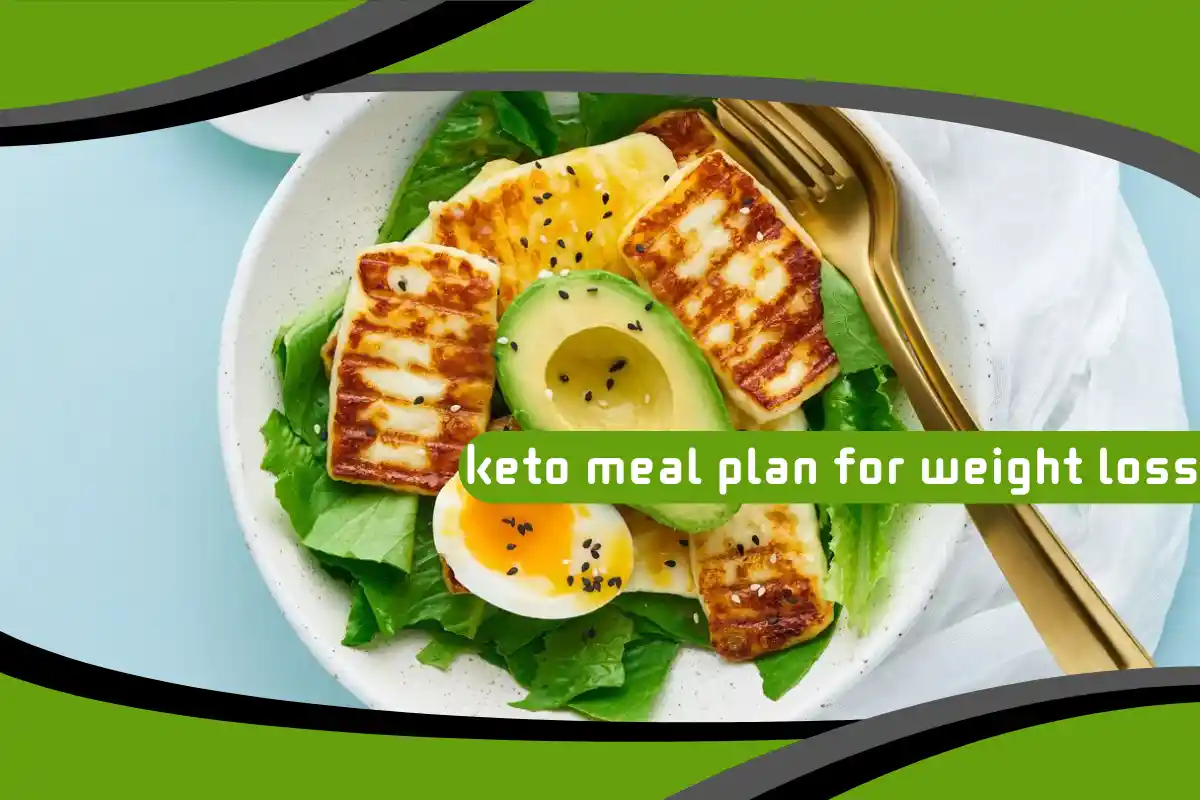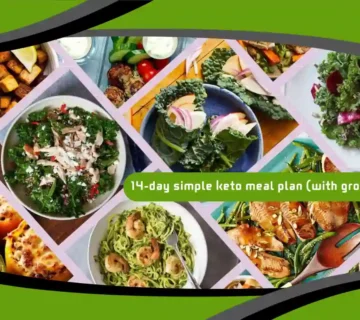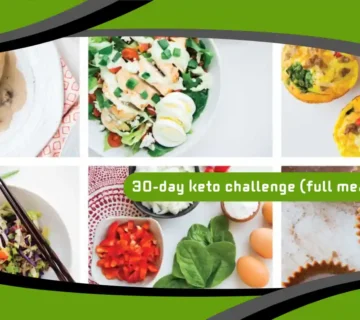The ketogenic diet, commonly referred to as the keto diet, has gained immense popularity for its effectiveness in promoting weight loss and improving metabolic health. By shifting the body’s fuel source from carbohydrates to fats, the keto diet promotes a metabolic state known as ketosis, where the body burns fat for energy. However, successful weight loss on a keto diet requires more than simply cutting carbs—it demands a thoughtfully structured meal plan tailored to meet nutritional needs while ensuring sustained fat loss. This article provides an expert-level look into designing a keto meal plan for optimal weight loss results.

Understanding the Fundamentals of the Keto Diet
Before embarking on a keto meal plan, it’s crucial to understand the basic principles behind the ketogenic diet. The standard ketogenic ratio involves consuming approximately 70-75% of daily calories from fats, 20-25% from protein, and just 5-10% from carbohydrates. This drastic reduction in carbohydrate intake pushes the body into ketosis, encouraging it to use stored fat as its primary energy source. This metabolic shift is the foundation of keto-based weight loss and must be supported with a precise balance of macronutrients.
Why Ketosis Supports Fat Loss
Ketosis is a metabolic state that facilitates fat oxidation by restricting glucose availability. When carbohydrates are limited, insulin levels drop, enabling the body to release stored fat and convert it into ketones in the liver. These ketones then serve as an efficient fuel source for the brain and body. The consistent use of fat for energy helps reduce overall fat stores, making ketosis a powerful mechanism for weight loss when maintained through disciplined meal planning.
Customizing Your Keto Macronutrient Ratios
To create a keto meal plan that promotes weight loss, individual macronutrient needs must be accurately calculated. Factors such as age, gender, activity level, and metabolic health all influence how much fat, protein, and carbohydrates one should consume. For example, active individuals may benefit from a slightly higher protein intake to preserve lean muscle mass. Utilizing a keto macro calculator can help you determine your ideal daily intake, forming the foundation for effective meal planning.
Building Your Keto Pantry for Success
Stocking your kitchen with keto-friendly staples sets the stage for a successful meal plan. Essential items include healthy fats like avocado oil, coconut oil, and ghee; low-carb vegetables such as spinach, kale, and zucchini; and high-quality proteins like grass-fed beef, pasture-raised eggs, and wild-caught fish. By maintaining a pantry filled with these ingredients, you minimize the temptation to revert to high-carb convenience foods and support your commitment to ketosis.
Watch also: Keto Guacamole & Cucumber Bites: The Ultimate Low-Carb Party Snack Everyone Will Love
Planning Keto Breakfasts for Fat-Fueled Mornings
Breakfast plays an important role in establishing a fat-burning metabolic rhythm. A well-balanced keto breakfast may include scrambled eggs cooked in butter with avocado slices and a side of leafy greens. Alternatively, chia seed pudding made with unsweetened almond milk and topped with walnuts offers a high-fat, low-carb option. The goal is to start the day with ample fat and moderate protein to maintain satiety and prevent carb cravings.
Smart Keto Lunch Ideas to Keep You Full
A successful keto lunch should combine protein, healthy fats, and fiber-rich vegetables to keep you satisfied throughout the afternoon. Consider grilled chicken thighs served over arugula and spinach, drizzled with olive oil and lemon juice. Or enjoy tuna salad wrapped in lettuce leaves with a side of olives and cucumber slices. Prioritizing nutrient-dense options helps you meet your weight loss goals without compromising on taste or satiety.
Satisfying Keto Dinners to End the Day Right
Dinner is an opportunity to unwind with a nourishing, satisfying meal that keeps you in ketosis overnight. A grilled salmon filet served with roasted Brussels sprouts and a creamy garlic butter sauce makes for a flavorful, high-fat dinner. For variety, try zucchini noodles topped with a meat-based marinara sauce and parmesan cheese. These types of meals promote fullness while keeping carbohydrate intake low.
High-Fat Snacks That Support Ketosis
Strategic snacking can help you stay on track, especially during the initial phase of keto adaptation. Suitable snack options include macadamia nuts, cheese sticks, hard-boiled eggs, and guacamole with raw veggie sticks. These snacks provide fat and protein to curb hunger without kicking you out of ketosis, making them ideal for supporting consistent weight loss results.
Incorporating Low-Carb Vegetables Daily
Vegetables are vital on a keto meal plan, providing fiber, antioxidants, and essential micronutrients. Focus on non-starchy options like spinach, kale, cauliflower, broccoli, and zucchini. These vegetables are low in carbohydrates but high in volume and nutrients, supporting digestive health and promoting satiety, which are both essential for sustainable weight loss.
Hydration and Electrolyte Balance on Keto
Due to the diuretic nature of the ketogenic diet, maintaining proper hydration and electrolyte balance is critical. As your body sheds water weight, it also loses sodium, potassium, and magnesium—minerals essential for energy and performance. Drinking plenty of water and supplementing with bone broth, Himalayan salt, or electrolyte tablets can help prevent fatigue, cramps, and headaches commonly known as “keto flu.”
Meal Prepping for Consistency and Control
Meal prepping is a powerful tool for those committed to weight loss on keto. Preparing meals in advance reduces the likelihood of impulsive, non-keto food choices and ensures that macro ratios are consistently met. Batch-cooking proteins, chopping vegetables, and storing fat-rich sauces can make sticking to your keto plan far more manageable during busy weekdays.
Watch also: Why Did I Gain Weight on Keto? The Main Causes and How to Avoid Them
Adjusting Your Plan for Plateaus
It’s common to experience weight loss plateaus after initial success on keto. When progress slows, assess your caloric intake, macronutrient ratios, and physical activity. Sometimes, reducing protein slightly or incorporating intermittent fasting can help break through a plateau. It’s also helpful to track food intake using a digital app to identify any hidden sources of carbs or excessive calories.
Using Intermittent Fasting to Enhance Results
Pairing keto with intermittent fasting (IF) can amplify fat loss by extending the period of fat burning and reducing insulin levels. Popular IF patterns like 16:8 or 18:6 allow for daily fasting windows that align with keto’s metabolic benefits. Combining these strategies can increase ketone production and promote deeper fat adaptation, accelerating weight loss without reducing food volume drastically.
Monitoring Ketone Levels for Accuracy
To ensure that your body is in ketosis, you can measure ketone levels using urine strips, blood meters, or breath analyzers. Regular monitoring helps confirm that your meal plan is effectively maintaining ketosis. While not essential for everyone, this tool can be especially helpful for beginners or those experiencing weight loss stalls.
Avoiding Common Keto Mistakes
Many people unintentionally sabotage their keto efforts by consuming hidden carbs, overeating protein, or underestimating calorie intake. Reading labels, tracking meals, and choosing whole, unprocessed foods can help avoid these pitfalls. Awareness and consistency are key to maintaining ketosis and promoting steady weight loss without frustration or setbacks.
Choosing Quality Over Quantity in Fats
Not all fats are created equal. For sustainable weight loss and long-term health, prioritize fats from natural, whole-food sources such as avocados, nuts, seeds, olive oil, and fatty fish. Avoid trans fats and highly processed seed oils, as they may contribute to inflammation and metabolic dysfunction, undermining your progress even if you stay within your keto macros.
Managing Cravings Without Breaking Ketosis
Cravings can arise even on a well-planned keto diet, especially during the initial adaptation phase. Combat these by incorporating satisfying, high-fat meals and snacks, staying hydrated, and using natural sweeteners like stevia or erythritol in moderation. Psychological strategies such as mindful eating and stress management can also reduce the emotional triggers behind cravings.
Tracking Progress Beyond the Scale
Weight is just one metric of success on a keto diet. Tracking measurements, energy levels, mood, sleep quality, and even lab markers like blood glucose and lipid profiles can provide a more comprehensive picture of progress. These non-scale victories can offer motivation and reveal benefits that go beyond weight loss alone.
Creating a Sustainable Keto Lifestyle
Long-term success with a keto meal plan depends on making it sustainable and enjoyable. Instead of treating keto as a short-term diet, embrace it as a lifestyle centered on whole foods, mindful eating, and metabolic health. Experiment with new recipes, celebrate milestones, and stay educated to keep your motivation high. A well-structured keto plan can transform not only your weight but your overall well-being.
Watch also: How the Keto Diet Affects Hormones: Impact on Insulin, Thyroid, and Reproductive Healt



No comment